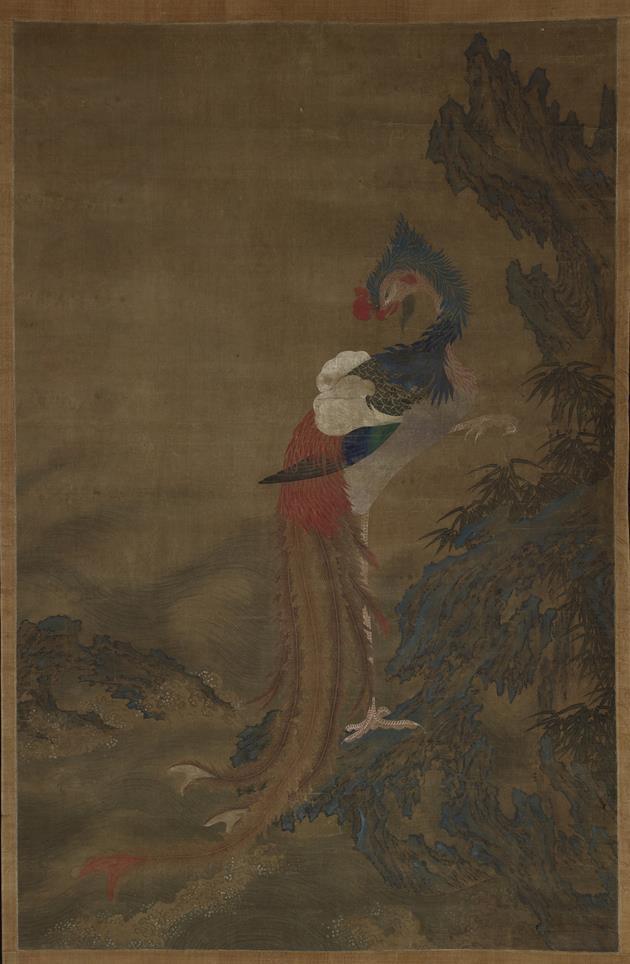Phoenix
18th century
Because the mythological phoenix has been recognized as the most auspicious of birds in China for two millennia, it is found throughout the pictorial records of China and cultures of the East Asian cultural sphere, including Japan, Korea, and Vietnam. With the Qilin (a mythical beast), Dragon, and Turtle, it is one of the four auspicious animals of the cosmos, as described in the ancient Book of Rites (Liji). Perched on a rocky outcropping amid a choppy sea, the phoenix’s colorful feathers are described by the unknown Chinese artist through a layering of extraordinarily fine, meticulous brushwork.
Ink and color on silk
Overall (includes mounting, end knobs): 104 1/2 × 45 1/4 in. (265.5 × 115 cm)
Image: 59 13/16 × 39 1/16 in. (152 × 99.2 cm)
Eugene Fuller Memorial Collection
34.180
Provenance: Leon Ellis, by 1934; Seattle Art Museum, Seattle, Washington, 1934
Photo: Susan Cole



